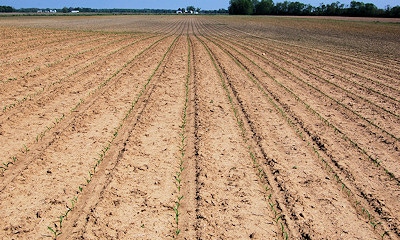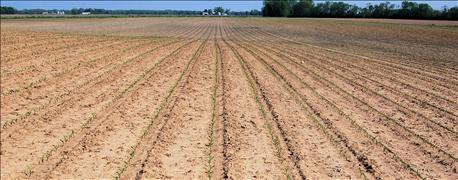
Some wise old person said ‘don’t count your chickens before they hatch,’ and it stuck. Try this one- ‘don’t count your corn plants before they are knee-high, more or less.’
Is that the right time? Some agronomists say ‘yes,’ some say it’s too late. It may depend upon what you’re trying to accomplish.
Here’s what three agronomists say about the best time to take stand counts if you want to evaluate planter performance. The agronomists with different opinions include Jesse Grogan, LG Seeds, Lafayette; Greg Kneubuhler, G & K Concepts, Harlan and Tom Stein, Ceres Solutions, Boswell/Templeton branches. All three are Indiana Certified Crop Advisers.

READY TO ASSESS: Patterns are obvious in corn at this stage. Some prefer to take stand counts before this time, while others say V4 to V6 is an excellent time to count and assess planter efficiency.
Check this out: Why you don't want to find rootworm larvae in the corn field!
Grogan: The best time to collect stand counts to evaluate planter efficiency is the V4 to V6 stage. Plants have four to six leaves, with leaf collars fully exposed. Plants will likely make it to harvest and contribute to yield. These plants are fully utilizing developed root systems and are in a rapid period of growth and development.
Kneubuhler: You can assess planter performance long before corn is emerged. But to get an accurate stand count, it can be done as soon as you can row corn. After corn is emerged, you can start to evaluate consistency in depth, spacing and overall planter performance. It’s important to walk fields early to assess performance. That can help make decisions for next year.
Stein: The best time to take stand counts is when seedlings emerge. The advantage of checking stand counts earlier is that it allows you to make evaluations and gives you more time to address any issues that may have surfaced in regards to planting, diseases or insects while it’s still early in the growing season.
Kneubuhler: Late-season counts to assess ear counts. Just because you have a stand or population doesn’t mean each plant will support an ear. Early and late evaluations can assist in proper planter set-up for subsequent years.
Spring tips: 10 things you should know about possible nitrogen injury to corn
Grogan: GPS-coordinates should be used when collecting stand counts, especially if variable rate seeding was used. Late-season plant counts are good, but are much more difficult to complete. When you go in at the V4 to V6 stage, it’s more convenient to walk into selected areas of the field and take measurements.
There can be a reason to scout and take counts even earlier than V4 to V6. Evaluate stands at the V1 to V2 stage in poor places of the field for timely replant decisions, if needed. Plant counts collected at V4 to V6 are more likely to be evaluated with observations throughout the entire crop season, and used to improve planter efficiency.
About the Author(s)
You May Also Like




